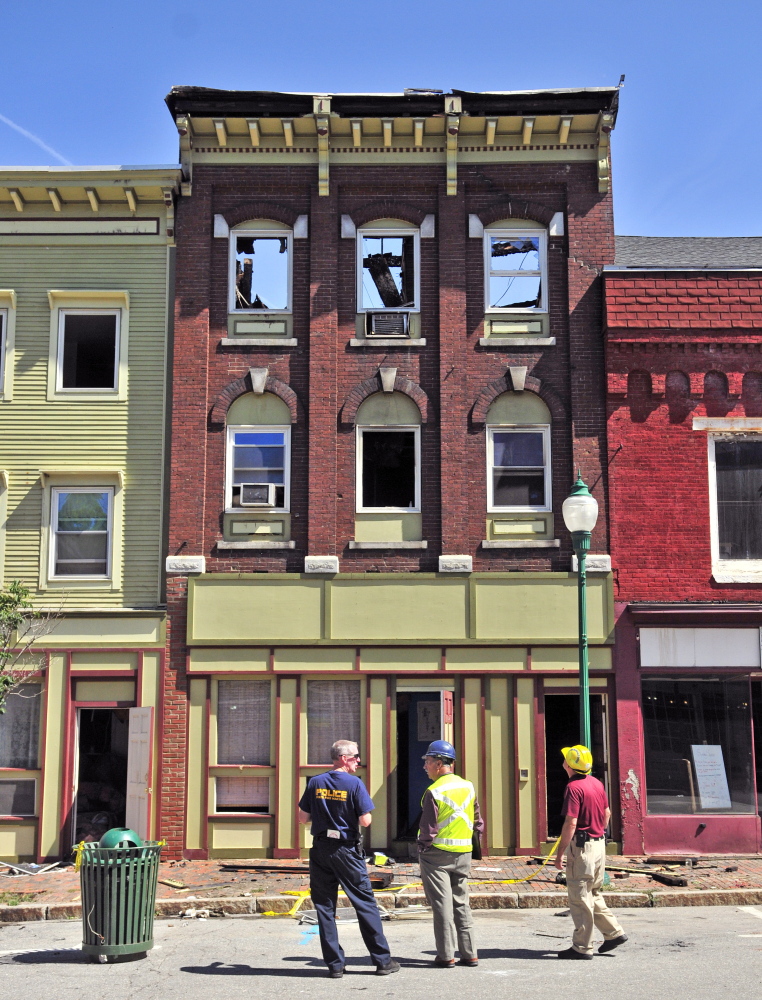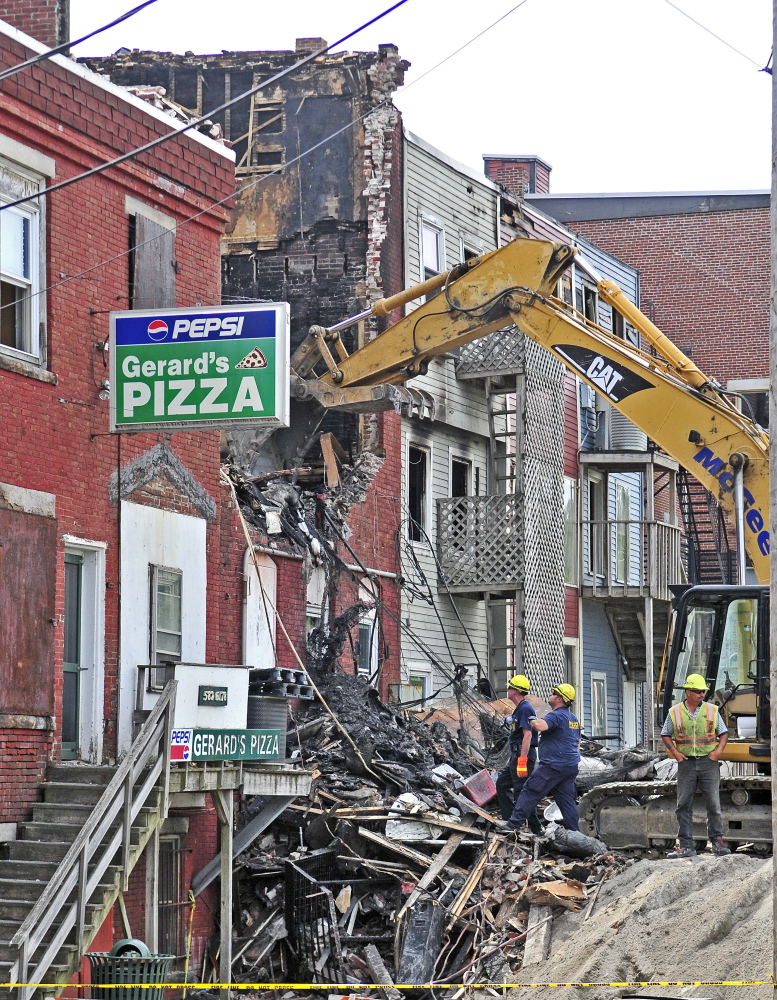GARDINER — From most of Water Street, it’s not clear a fire gutted two buildings in the city’s historic downtown district a little over a week ago.
The building facades survived, but the July 16 fire destroyed part of a roof and workers tore down half of its rear wall with a backhoe, giving a clear view of the sky through the windows on Water Street.
Community members hope the burnt-out buildings don’t become a black eye for the downtown or are simply torn down and turned into another park.
The head of Gardiner Main Street, a downtown revitalization organization, said it will be up to the building owners and their insurance companies to decide what to do, but he hopes the structures can be saved.
“I view our historic buildings as our greatest asset, one of our greatest assets, to build and to grow,” Executive Director Patrick Wright said from his Water Street office last week. “If we were to lose those, that would present a challenge.”
He said the effort to revitalize the downtown would be able to overcome the loss of buildings, but it would mean a drop in the downtown’s precious inventory of historic buildings.
“Those buildings were built in the late 1800s,” Wright said. “They don’t build them like that anymore.”
The fact that the buildings are considered historic and are part of the downtown district listed on the National Register of Historic Places may provide avenues and funds for rebuilding that wouldn’t otherwise be available.
If the buildings are found to be eligible, federal and state historic tax credits might reimburse 45 percent of any reconstruction costs. And if the buildings keep their historic status, they could be rebuilt in the federal flood zone without meeting modern flood-proofing standards.
Although the structures may be exempt from the floodplain requirements, the Federal Emergency Management Agency, which oversees the federal flood insurance program, advises that flood mitigation efforts should be considered when rehabilitating a historic structure.
Maine Preservation, a Yarmouth-based nonprofit that works to preserve historic places in the state, sent a consultant to Gardiner soon after the fire to work with officials evaluating the buildings. In order to remain eligible for historic building benefits, structures need to have at least 75 percent of their walls intact, said Greg Paxton, executive director of the organization.
It appears the damaged buildings in Gardiner would still be eligible for the tax credits, but it’s too early to determine that, Paxton said.
If the buildings end up being torn down, Clare Marron, a downtown business and building owner, said she hopes it happens sooner rather than later.
Marron and her partner live above her art gallery and shop, Monkitree, on the same block as the damaged buildings. She said she would prefer the building remain available for residential and business tenants.
“We have a downtown that people come to for the first time and say, ‘This is a special place.’ I would hope that we could maintain that feeling in our downtown,” Marron said, “whether that happens by saving those buildings or doing something new.”
George Trask, a former city councilor, is skeptical the buildings will be rebuilt. The longtime resident said that if the buildings are torn down, as he expects, he hopes the city can build a small parking garage in their place – anything but another park.
“I’d hate to see a big hole in the middle of Water Street, but I don’t know what else to do,” Trask said.
Copy the Story LinkSend questions/comments to the editors.




Success. Please wait for the page to reload. If the page does not reload within 5 seconds, please refresh the page.
Enter your email and password to access comments.
Hi, to comment on stories you must . This profile is in addition to your subscription and website login.
Already have a commenting profile? .
Invalid username/password.
Please check your email to confirm and complete your registration.
Only subscribers are eligible to post comments. Please subscribe or login first for digital access. Here’s why.
Use the form below to reset your password. When you've submitted your account email, we will send an email with a reset code.